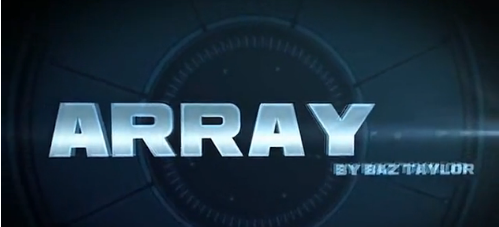In effect, two cards are selected by a spectator, the rest of the pack is mixed up – face up and face down. Then the pack instantaneously rights itself leaving a single suit face up revealing the identity of the first chosen card. In a flash the cards change so that a second suit is face up instead of the first, and the second chosen card can be identified.
Clearing the ground
Array is advertised as a sleight free version of John Bannon’s Play it Straight Triumph. I love Bannon’s work so was keen to see where this had been taken, though I was also surprised because as far as I am aware the original effect was sleight free. Having worked through the DVD, I think that it is probably fairer to say that the difference between this and Bannon’s original is that there is an extra magical effect (or two) in Array – since two cards are selected at the outset and a face-up spread in one suit instantaneously changes into a face-up sread in another. A third phase is also added, about which more later. In order to achieve this instantaneous change, gaff cards are introduced which immediately makes it a different kind of effect to Bannon’s original (which required a set up but an ordinary deck).
Enough disambiguation, what of the effect and the instructions?
Peter Nardi does his usual thorough job of explaining the effect. He describes the development of the effect, takes you through the gaffs provided and the set up of the deck. The routine sits most comfortably at a table – though an alternative ‘in the hands’ handling is explained. There is also an alternative handling by Andy Smith and an extra effect called Array Transpo (see below). If I’m honest, I have quite mixed feelings about this one.
The good the bad and the ugly
There is no doubt that the gaffs which make this sleight free (assuming you overlook the need for a force – which dealers almost always do when advertising sleight-free card tricks!) allow for a spectacular instantaneous change to reveal the second choice. But I wonder whether they make the effect too good to be true?
Nardi adds an extra ‘Triumph’ phase which certainly takes it out of its sleight-free status. Although he says (and I am sure it is true) he came up with the idea himself, Bannon actually suggests pretty much this same idea – of adding the original Play It Straight after Vernon’s Triumph – in every published version of the effect – from Impossibilia onwards. With that exception (which is almost certainly an oversight) he attributes sources well.
The effect is definitely better/easier with a table, which doesn’t really suit my regular performing scenario, but may not be a deal-breaker for you. The ‘in the hands’ version which is taught seems a bit clunky to me. Andy Smith provides a variation which changes the routine somewhat – and to my mind just confuses things. I think the original is much clearer for the spectator.
Array Transpo – a bonus effect using the same gaffs – is an instantaneous transposition effect where the Ace through Four of two different suits swap places with no moves. I quite like this but there are plenty of strong no-gaff versions of this kind of effect. On the plus side the gaffs enable a very visual moment of transposition, on the negative you can’t examine the cards. It is very hard to evaluate the pros and cons of these things.
So this seems like a bit of a mixed bag to me. It is no doubt visually impressive magic for relatively little effort. But I think, if I’m honest, I prefer the original. A little bit of imagination with the gaff cards may lead you to develop some more interesting packet effects along the line of Array Transpo. But unless you’re desperate to try out the gaffs, I’d spend slightly less money and pick up Bannon’s ‘Six. Impossible. Things.’ which includes the original effect plus another six extras. Hope I’m not sounding like too much of a Bannon fan-boy…

